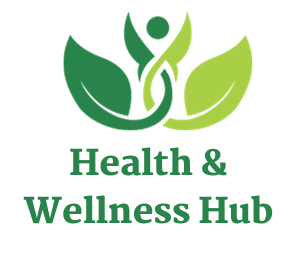High blood pressure, also known as high blood pressure, is a condition that affects millions of people worldwide. It is often called the “silent killer” because it usually has no noticeable symptoms but can lead to serious health complications such as heart disease, stroke and kidney failure. Controlling high blood pressure is vital to long-term health, but what can you do in a moment of crisis when your blood pressure rises? Fortunately, there are quick techniques you can implement to help lower your blood pressure quickly.
Table of Contents
ToggleUnderstanding Blood Pressure and Its Causes
Before diving into instant remedies, it’s essential to understand what blood pressure is. Blood pressure is the force exerted by circulating blood against the walls of your arteries. When this pressure is consistently too high, it can strain your heart and arteries, leading to health risks.
Factors like stress, poor diet, lack of physical activity, and genetics can contribute to high blood pressure. While medications and long-term lifestyle changes are vital for overall management, there are some quick, science-backed ways to help bring it down in moments of need.
1. Deep Breathing Exercises: Slow and Steady
A simple and effective way to lower your blood pressure almost immediately is to practice deep breathing. Stress and anxiety can cause your heart rate and blood pressure to increase, and deep breathing can help combat this.
How to Do It:
- Find a quiet place to sit or lie down comfortably.
- Close your eyes and take a deep breath in through your nose for 4 seconds.
- Hold your breath for 2 seconds.
- Slowly exhale through your mouth for 6 seconds.
- Repeat this process for 5 to 10 minutes.
This technique activates the parasympathetic nervous system, helping your body relax and lowering your heart rate, which in turn helps reduce blood pressure.
2. Progressive Muscle Relaxation: Tension Release
Stress is a major contributor to muscle tension, often manifesting in specific areas of the body like the shoulders, neck, and back. When we experience stress, the body’s natural response is to tense up, as part of the “fight or flight” mechanism. This tension, while initially intended to help us react quickly to a threat, becomes harmful when sustained over time. Prolonged muscle tension restricts blood flow, increases strain on the heart, and can contribute to elevated blood pressure.
Progressive Muscle Relaxation (PMR) is a well-known technique that addresses this issue by systematically targeting and releasing the tension in each muscle group. PMR involves consciously tensing individual muscle groups for a few seconds, followed by slowly releasing that tension. This deliberate contrast between tightness and relaxation helps you become more aware of where your body is holding stress. Over time, PMR retrains your body to relax more easily, and the act of systematically relaxing muscles can lower both physical tension and blood pressure almost immediately.
When practiced regularly, PMR also teaches the body how to stay in a more relaxed state even in stressful situations. Because high levels of stress are linked to high blood pressure, managing muscular tension through PMR is an effective way to counteract hypertension and improve overall physical and mental well-being.
In addition to reducing blood pressure, PMR also helps lower the stress hormones (like cortisol) that contribute to feelings of anxiety and restlessness. It promotes a calming effect, not just on your muscles, but also on your entire nervous system, helping you achieve both physical and emotional relief.
How to Do It:
- Start by finding a comfortable position, either sitting or lying down.
- Begin by tensing the muscles in your feet for 5 seconds, then relax them.
- Move up to your calves, thighs, abdomen, chest, hands, arms, shoulders, and finally, your face, tensing and relaxing each group.
- Focus on the sensation of tension leaving your body with each relaxation phase.
PMR encourages mindfulness and reduces muscle tightness that can contribute to elevated blood pressure.
3. Cold Water Face Splash: A Quick Reset
- For an immediate, dramatic effect, splashing cold water on your face can trigger what’s known as the “diving reflex,” which slows the heart rate and reduces blood pressure. This reflex is a survival mechanism that conserves oxygen and reduces cardiovascular strain when submerged in cold water.
How to Do It:
- Splash cold water on your face several times, focusing on the areas around your cheeks, forehead, and eyes.
- Alternatively, place a cold compress or ice pack on your face or neck for a similar effect.
This simple action stimulates the vagus nerve, which plays a crucial role in lowering blood pressure and heart rate.
4. Hydration: Drink Water to Balance Blood Pressure
Dehydration occurs when the body loses more fluid than it takes in, causing an imbalance in essential bodily functions. One of the body’s responses to dehydration is the constriction, or constriction, of blood vessels. This happens because when the body is dehydrated, it tries to conserve as much fluid as possible. By constricting the blood vessels, the body reduces the amount of water lost through processes such as sweating and urination. However, it increases resistance in the circulatory system during vasoconstriction (narrowing of the blood vessels), which can lead to an increase in blood pressure.
In short, the heart has to work harder to pump blood through the narrowed vessels, which increases blood pressure. This response is the body’s way of maintaining adequate blood flow to vital organs, but over time, it puts unnecessary stress on the cardiovascular system. This is why dehydration is a hidden but important factor that can contribute to high blood pressure, especially in people with high blood pressure.
How to Do It:
- If you feel a spike in your blood pressure, drink a glass of water slowly.
- Aim to drink 8-12 ounces of water when you notice symptoms like a headache, dizziness, or fatigue, which are often associated with high blood pressure.
Keeping your body well-hydrated supports optimal blood circulation and helps manage blood pressure.
Drinking water immediately after experiencing dehydration can help reverse this process. When you rehydrate, the body can relax its blood vessels, restoring normal blood flow and reducing the pressure within the arteries. Water acts as a natural dilator, helping to lower blood pressure by improving circulation and making it easier for the heart to pump blood without extra resistance.
Moreover, water is essential for maintaining the proper balance of electrolytes, like sodium and potassium, which also play a crucial role in regulating blood pressure. Dehydration can throw off this balance, leading to further complications. Drinking water helps to restore these essential minerals to normal levels, improving overall cardiovascular function.
For people with high blood pressure, staying hydrated is crucial. Even mild dehydration can cause a significant spike in blood pressure. Regularly drinking water throughout the day helps to maintain normal fluid levels in the body, ensuring that the circulatory system functions smoothly and blood pressure remains within a healthy range.
5. Slow Walking: Gentle Movement for Quick Results
If you’re in a safe environment, slow walking can have an almost immediate effect on lowering blood pressure. Physical activity boosts circulation and helps reduce stress, both of which contribute to lowering blood pressure.
How to Do It:
- Step outside or walk slowly indoors for 5 to 10 minutes.
- Focus on deep breathing and gentle movement, making sure not to push yourself too hard.
This mild form of exercise can help your body use energy more efficiently and lower your blood pressure.
6. Legs Elevated Against the Wall: Gravity at Work
- Raising your legs above the level of your heart encourages blood flow back to your heart and reduces strain on your cardiovascular system. This position can bring relief from a sudden blood pressure spike by promoting venous return (the flow of blood back to the heart).
How to Do It:
- Lie down on your back, close to a wall.
- Elevate your legs and rest them against the wall, forming a 90-degree angle with your body.
- Stay in this position for 5-10 minutes, breathing deeply and allowing your body to relax.
This simple pose, often used in yoga, helps regulate blood flow and can lower blood pressure.
6. Legs Elevated Against the Wall: Gravity at Work
While these tips can provide instant relief, it’s essential to focus on long-term solutions to keep your blood pressure in check consistently. Regular exercise, a balanced diet rich in fruits, vegetables, and low in sodium, and stress-reducing activities like yoga and meditation are all crucial for managing hypertension.
Moreover, consult a healthcare professional for personalized advice and medication if needed. Chronic high blood pressure often requires medical intervention in addition to lifestyle changes.
.
Final Thoughts
Managing high blood pressure in a matter of seconds can be life-saving in critical situations. Techniques like deep breathing, muscle relaxation, cold water splashes, and even a quick walk can provide immediate relief. However, these methods should be considered as short-term fixes while focusing on long-term, sustainable health strategies. Always monitor your blood pressure regularly and seek professional medical advice if you notice consistent spikes.

